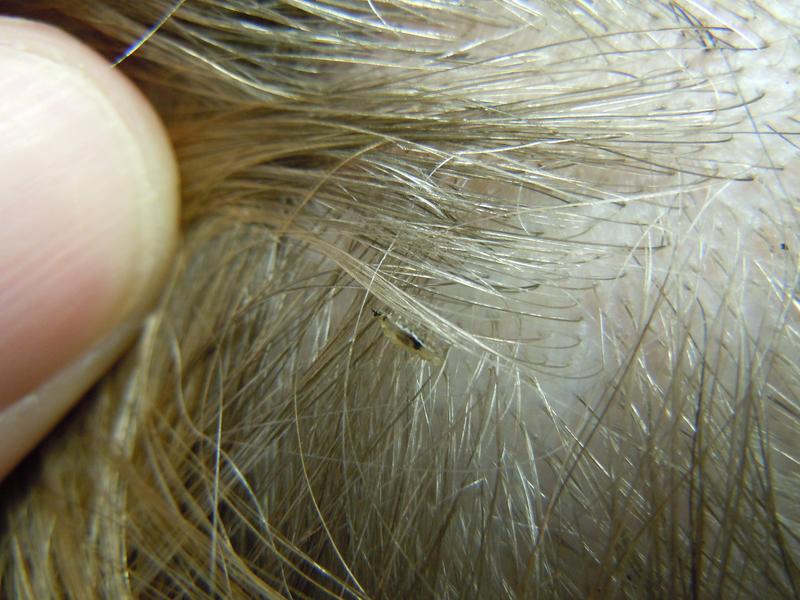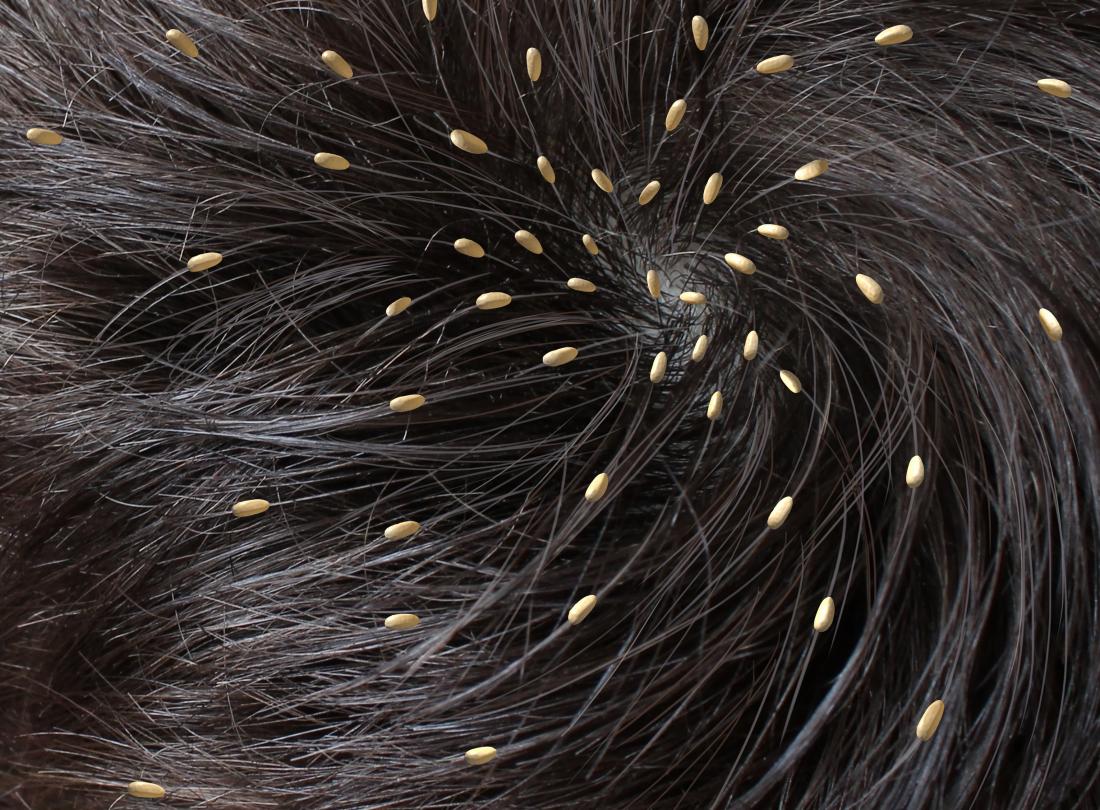Table Of Content

Make sure you follow the instructions on your medicated shampoo, lotion or cream to get rid of lice quickly. Lice can live up to 30 days or longer on your head if left untreated. Head lice can’t spread disease, but they can make your scalp itchy. Frequent itching could break the skin on your scalp, which could lead to infections.

What do the eggs look like?
Clothing, bedding, and towels must all be washed in hot water to control the infestation. Vacuuming carpets and furniture upholstery is another component of the treatment process for head lice. Instead, they crawl around in your hair and on your scalp to get nourishment. The parasites crawl onto your clothing, hairbrushes, hats, towels, and any other personal belongings. Head lice feed on blood and therefore stay close to the scalp where there is an abundant supply of food.
Lice Signs and Symptoms
Afterward, people should use a nit comb to remove any dead or live lice that remain as well as the eggs. Lice have become immune to everything that used to work in the past. Perhaps you remember your mom using a typical lice treatment or mayonnaise and that doing the trick. If your child only has a few nits, they likely do not have an active lice infestation.
NHS warns of head lice epidemic as schools go back - what parents should do - The Mirror
NHS warns of head lice epidemic as schools go back - what parents should do.
Posted: Tue, 26 Sep 2023 07:00:00 GMT [source]
How to Find Head Lice in Your Child's Hair
Head lice: Everything parents should know about school's biggest pests - Today's Parent
Head lice: Everything parents should know about school's biggest pests.
Posted: Thu, 03 Nov 2022 07:00:00 GMT [source]
Once you know for sure that your child has lice, you can get treatment. Head lice can also be transmitted indirectly through the sharing of personal items that encounter the hair. Common items that may facilitate the spread of lice include hats, hairbrushes, combs, hair accessories, headphones and helmets. When individuals share these items, lice or nits may be transferred from one person's hair to another, leading to infestations. As we just discussed, a common misunderstanding is that nits are white.

#3 – Lice Eggs are Most Often Found in the “Hot Spots”
Head lice are tiny, crawling insects that live in the hair on your head. The most common symptom is itching, especially in the back of your head and neck and near your ears. Special medicated shampoos that contain a substance called pyrethrins are available to kill lice. To treat a head lice infestation, people can use medicines called pediculicides, which kill head lice. Some treatments are not suitable for young children, so it is best to check with a doctor or pharmacist before using them.
The easiest way to identify a lice infestation is to know what the eggs look like. Lice are good at hiding, but the eggs remain adhered to the hair shaft until they are manually removed. Just as nits are all the same shape, they are also all about the same size. Lice eggs are tiny, about the size of a small knot in a thread. If you see a variety of different sizes of what you think are nits, some small and some large, these are more likely a type of dandruff. If you find something in the hair that is circular or irregularly shaped, it is not a nit.
Dandruff
Treatment with pediculicides may also be necessary if body lice persist, despite improvements in housekeeping and personal hygiene. Less commonly, a person can get pubic lice by sharing towels, blankets, or clothing. However, a person should not use fumigant sprays or fogs to prevent head lice. These substances can be toxic and are not necessary for controlling the spread of head lice. People can kill head lice using chemicals called pediculicides.
The color of pubic lice can also range from grayish-white to beige. Evidence of lice can often be found above or behind the ear, but they will not enter your ear—even if your ears are hairy. Itching inside your ears during a lice infestation is a sign of an allergic reaction. Lice also cannot get into your brain through your ear or by burrowing through your skull.
Parasites - Lice - Head Lice
I’ve cured thousands of people of lice in my lice center and let me tell you, I don't do it with over-the-counter lice treatments. The legs of head lice are designed with claws on the end of each “foot,” designed perfectly to grip hair strands without falling off. In fact, the AAP now states that "no healthy child should be excluded from or allowed to miss school time because of head lice."
No, infestation with head lice doesn’t occur because someone has poor hygiene. Head lice spread from person to person during close contact or from sharing items that touch a person’s hair who has head lice. Treatment for head lice includes using over-the-counter medicated or prescription shampoos, lotions or creams that eliminate head lice.
While body lice tend to bite during the day, bed bugs bite at night, when the host is lying in the infected area. Due to their preference for dark places, they are difficult to spot without a flashlight. Practicing good housekeeping and personal hygiene is usually sufficient to prevent a body lice infestation.
A simple stack of WHITE paper towels is the very best place to examine a nit. The color of the paper towel is very important--do not place nits on something black or otherwise colored. Here you can see adult lice, some nymphs, and a few eggs still attached to these hair follicles. While you might spot live lice during your search, you won’t necessarily see them all the time.
Nits are often mistaken for dandruff or dirt in the hair because they are small and their shiny appearance can make them look white. Initially lice are laid in eggs (called “nits”) in the hair, you'll learn about those in the section just below this one. Each lice egg has one lice bug in it, that but hatches in about 7-10 days. Nymphs have all the same features of adult lice, including 6 legs, but the difference is they are EXTREMELY small, almost invisible to the naked eye. Additionally, they are almost entirely clear (see picture below). Usually the only thing that you can spot on transparent lice is their dark brown or black stomach.
Pay attention to the scalp, which is where you are most likely to see lice that are alive. You may also look at the roots of your hair for eggs and egg casings. Sores from scratching may be present on your scalp, but sores alone are not a reason to suspect that lice are present. People also use a number of home or natural remedies to get rid of head lice. But there is little to no clinical evidence that they're effective. Hair casts slide easily along the hair, whereas nits stick to it and are harder to remove.
Body lice may be seen on the skin when they are there to feed. The treatment for body lice is a little different and mainly includes improving the personal hygiene of the infected person. With effective treatment, head lice will completely go away after two to three weeks. The duration is dependent on how many lice made a home in your hair.
Close contact during play, group activities and shared spaces increases the likelihood of lice spreading from one individual to another. Additionally, the exchange of personal items and lack of awareness about head lice prevention may contribute to outbreaks in these settings. As with head lice, pubic lice lay their eggs on the base of hair shafts. The oval-shaped eggs are a whitish to yellowish color and are sometimes difficult to remove without a fine-tooth lice comb.

No comments:
Post a Comment